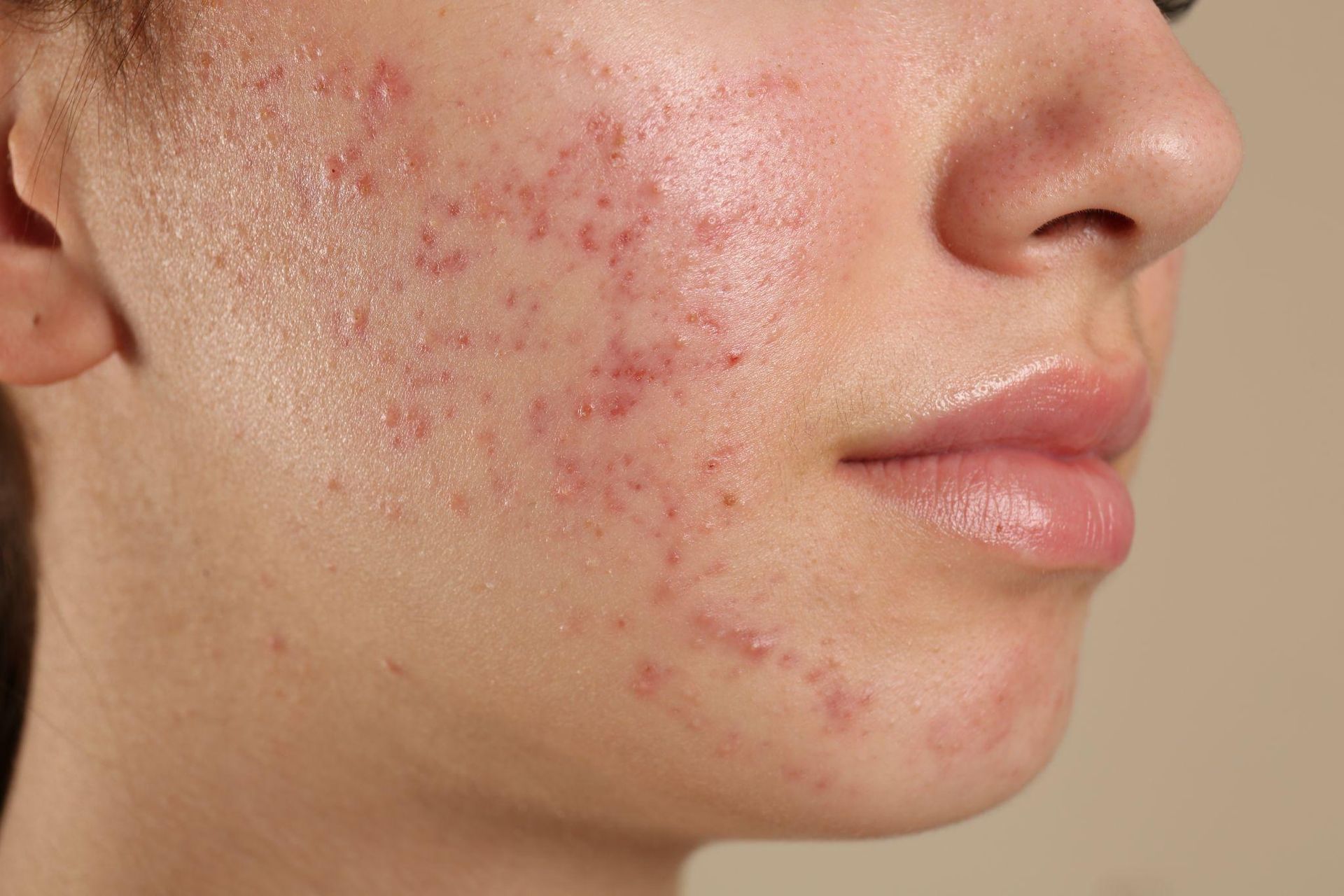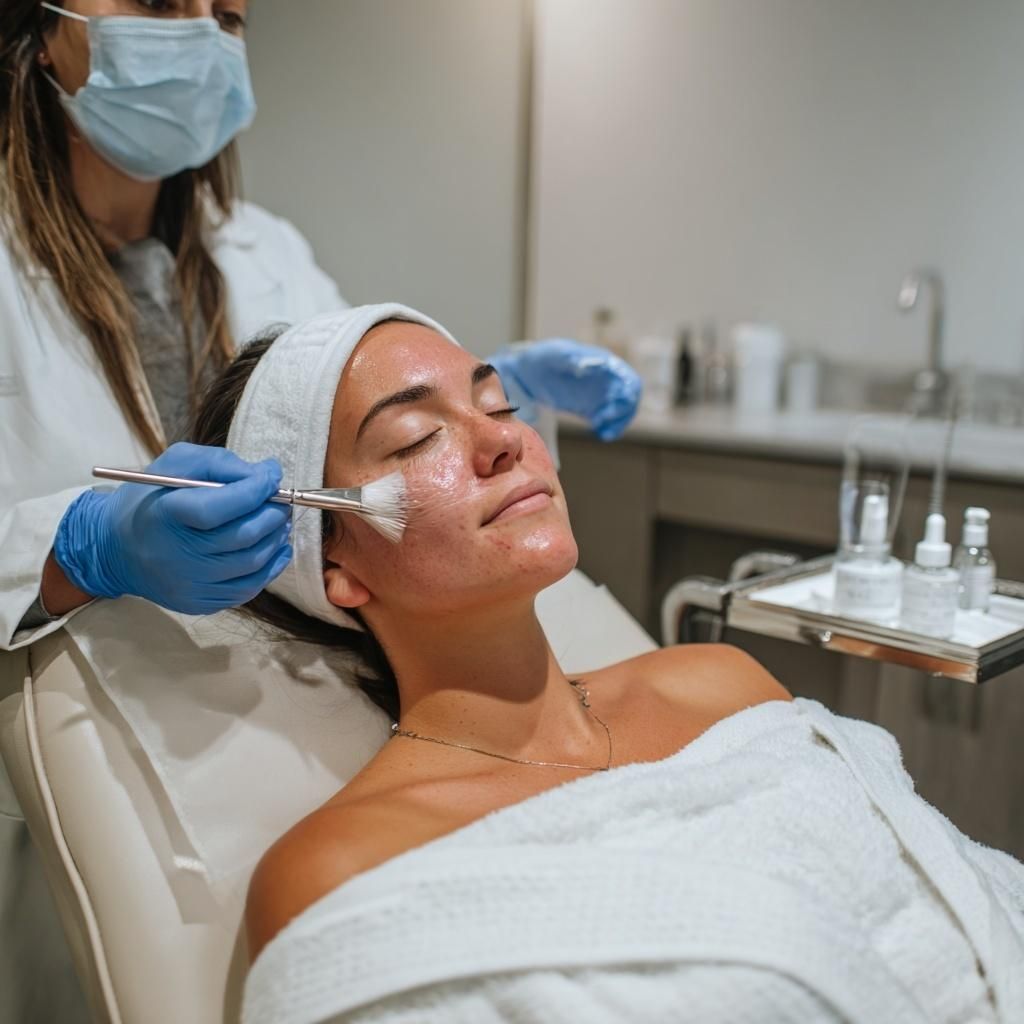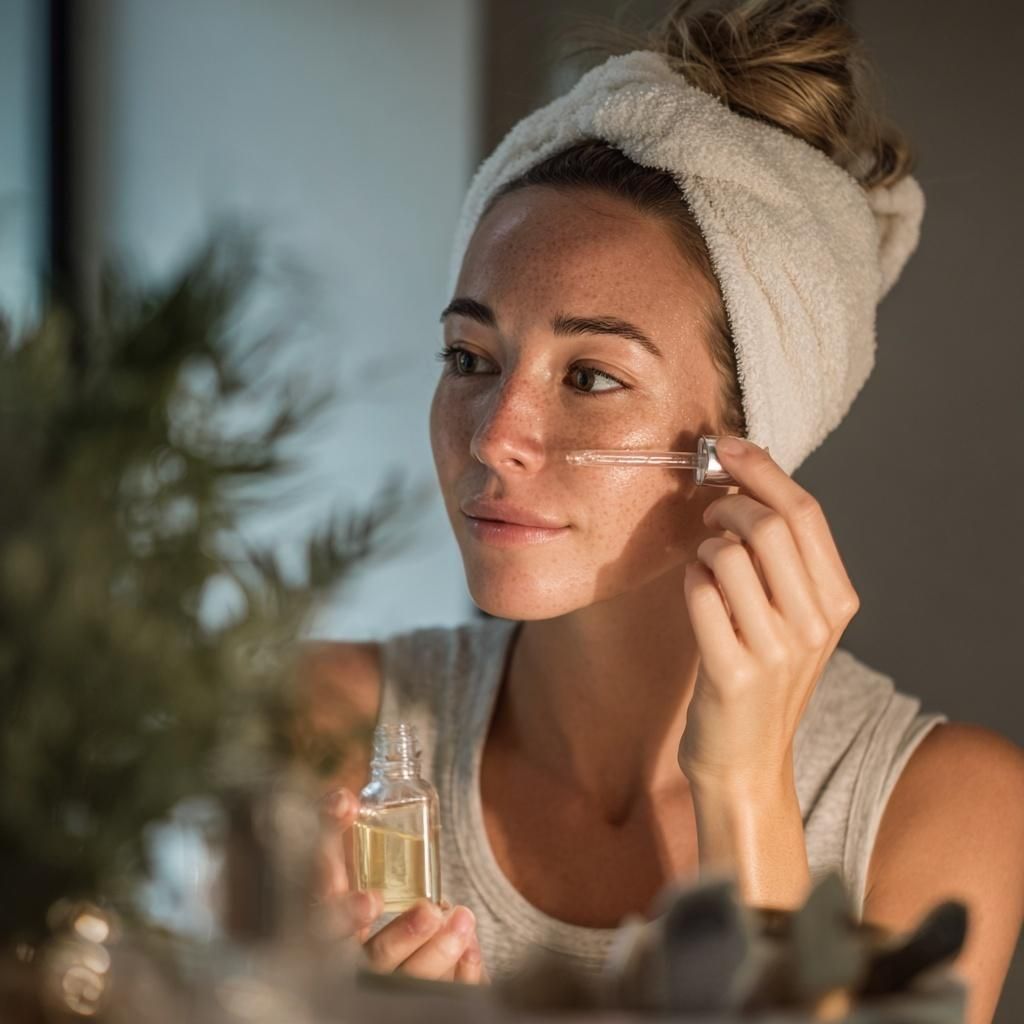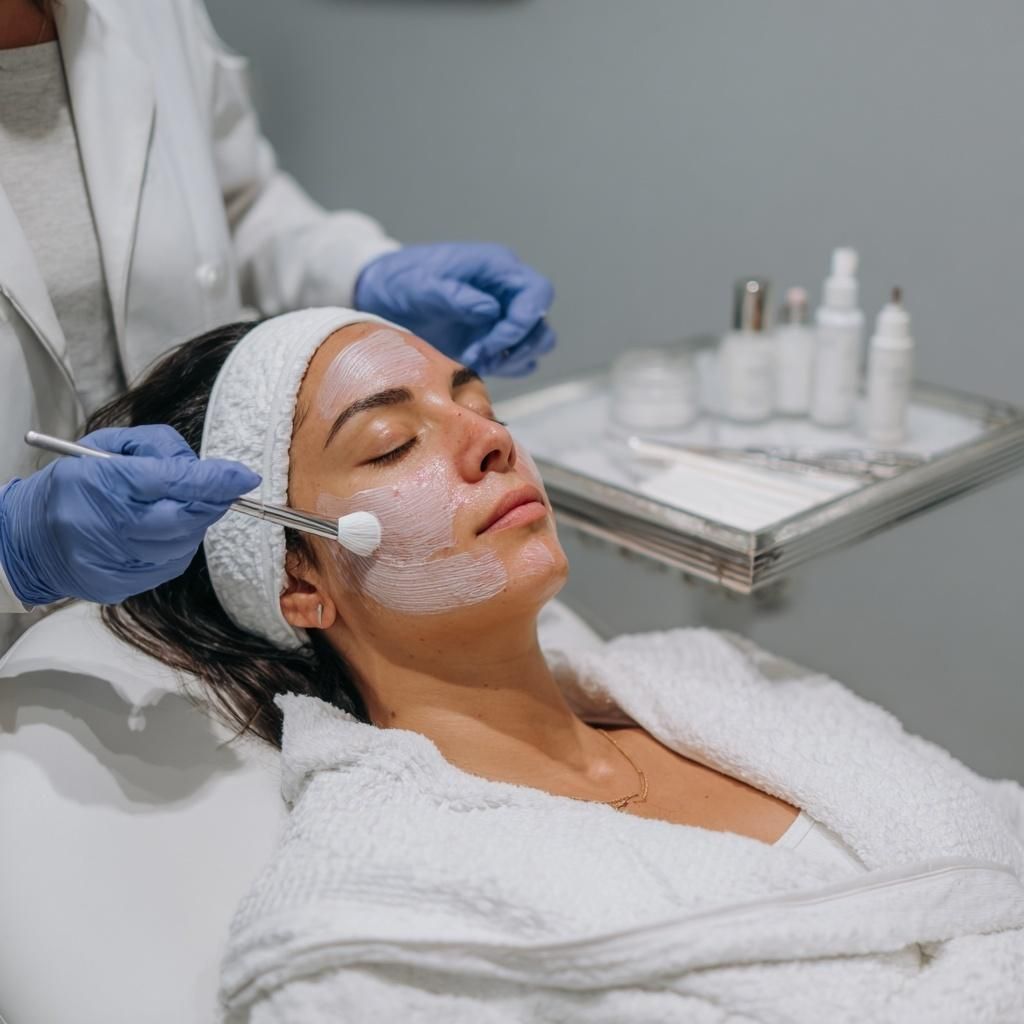Acne Treatment in Grants Pass, OR: 10 Tips to Flawless Skin

Acne doesn’t just affect your skin, it can affect your confidence, your mood, and even the way you show up in daily life. Millions of people deal with this common skin condition, yet it often feels like you’re the only one.
The good news is, acne has effective treatment options. At Southern Oregon Medical Aesthetics (SOMA) here in Grants Pass, OR, we treat acne with both advanced technology and personalized care. Our goal is to help you finally clear acne and keep it under control.
In this guide, we’ll cover the causes of acne, different treatment options, the best professional acne treatments available at our clinic, and lifestyle choices that can help you protect your skin and prevent acne from coming back.
Understanding Acne: Causes and Types
To fully understand acne, it helps to look at what triggers it, how it develops, and the different forms it can take.
What Are the Main Causes of Acne?
Acne develops when pores become clogged with oil and dead skin cells.That’s the start of a chain reaction: bacteria on your skin multiply, hormones can trigger excess oil production, inflammation sets in, and you get pimples. For some people, acne is mild and clears with over-the-counter acne products. For others, it turns into stubborn acne that needs stronger acne treatments.
Several things can cause acne to flare up:
- Excess oil (sebum): Hormones can trigger oil glands to overproduce.
- Blocked pores: Dead skin cells and oil combine to clog follicles.
- Bacteria that cause acne (C. acnes): This bacteria thrives inside clogged pores.
- Hormonal changes: Fluctuations during puberty, menstrual cycles, or stress often make acne worse.
Understanding these causes is the first step toward choosing the right type of treatment.
Is Acne Fungal or Bacterial?
Most acne vulgaris is caused by bacteria, but sometimes breakouts aren’t acne at all; they’re fungal folliculitis. This type of acne-like rash comes from yeast on the skin, not bacteria. It usually looks like small, itchy bumps and doesn’t respond to regular acne medications.
That’s why the right treatment matters. If you’ve tried multiple topical products or creams without improvement, it may be due to different types of acne (such as bacterial or fungal) that require more targeted solutions.
Where Is Hormonal Acne Usually Located?
Hormonal acne often shows up along the jawline, chin, and cheeks. It tends to be deeper, cystic, and painful compared to blackheads or whiteheads. Unlike teenage acne, hormonal acne flares with cycles and is more common in women who have acne in adulthood.
This type of acne may not improve with standard over-the-counter products. It often requires more advanced approaches that go beyond what creams alone can achieve.
The Life Cycle of Acne

Acne changes over time, and understanding how it progresses can explain why some people struggle as teens while others continue well into adulthood.
What Age Is Acne the Worst?
Acne is most common during the teenage years because hormones spike and oil production increases. For some people, it fades by the early 20s. But acne can also last into adulthood. Women with acne often see flare-ups in their 30s and 40s due to hormonal changes, pregnancy, or conditions like PCOS.
So if you’re an adult still battling breakouts, you’re not alone, and you’re not doing anything wrong. Acne can affect any age group.
Why Won’t My Acne Go Away?
When acne doesn’t respond to nonprescription acne products, it can feel like nothing works. This happens because chronic acne is often tied to genetics, stress, hormones, or the wrong type of treatment regimen. Using products that irritate the skin, over-washing, or relying on creams that make acne worse can keep breakouts going.
If you’ve been fighting acne for months without success, it may be time to consider advanced acne treatments. Over-the-counter products often aren’t enough to fully control breakouts, which is why professional treatments can make such a difference.
What Treatments Help with Acne?
We offer proven solutions that target acne at its source:
- Agnes RF Microneedling – An advanced treatment for severe active acne, including cystic acne. It targets the sebaceous glands to reduce future breakouts.
- SkinPen Microneedling – Improves skin texture and can be safely used on active acne to promote healing.
- HydraFacial – Deeply cleanses and hydrates while unclogging pores, making it great for mild to moderate acne.
- Retinol – Encourages cell turnover, unclogs pores, and supports clearer, smoother skin.
Each treatment option comes with unique benefits, but they all work toward the same goal: stopping breakouts, preventing new ones, and protecting your skin from long-term scarring.
Which Treatment Is Best for Acne?
There isn’t one single best treatment for acne; what works depends on the type and severity of your breakouts.
- Mild acne often responds well to treatments like HydraFacial or retinol.
- Active or moderate acne may need SkinPen microneedling to calm inflammation and improve skin texture.
- Severe or cystic acne can be effectively treated with Agnes RF microneedling, which targets the sebaceous glands to reduce future breakouts.
At SOMA, we personalize every acne treatment plan. That may mean combining in-office procedures with targeted skincare to give you the clearest possible results.
Advanced Acne Treatments at Southern Oregon Medical Aesthetics

For patients who need more than basic skincare or prescription medications, SOMA offers advanced in-office treatments designed to target both active acne and the scars it leaves behind.
Hydrafacials for Gentle Exfoliation and Pore Cleansing
Hydrafacials combine cleansing, exfoliation, extraction, hydration, and antioxidant protection in one treatment. For acne-prone skin, this means clogged pores are cleared of excess oil, bacteria, and impurities without the irritation that comes from traditional scrubs or harsh extractions.
The infusion of hydrating serums also helps restore balance, keeping the skin moisturized rather than overly dry, which can actually prevent future breakouts.
Microneedling for Acne Scars and Skin Renewal
Microneedling uses tiny, controlled micro-injuries to stimulate collagen and elastin production. This process encourages the skin to heal and regenerate, gradually replacing damaged scar tissue with new, healthy skin.
For acne patients, microneedling not only improves the look of pitted scars but also refines pores, evens out skin tone, and makes the overall surface smoother. When paired with serums, it can also help improve skin absorption of acne-fighting ingredients.
Fractional CO₂ Laser for Stubborn Scars
The Fractional CO₂ laser delivers precise beams of light energy into the skin, creating microscopic treatment zones while leaving surrounding tissue intact. This stimulates deep collagen remodeling and resurfaces the skin from the inside out.
For individuals with moderate to severe acne scars, the treatment softens deep pits, smooths rough texture, and promotes long-term skin renewal. Although downtime is longer compared to other treatments, the dramatic results often make it the gold standard for stubborn scarring.
Chemical Peels (PCA SKIN® Focus)
Chemical peels use controlled exfoliation with medical-grade solutions to lift away dead skin cells, dissolve oil buildup, and stimulate skin turnover. At SOMA, PCA SKIN® chemical peels are tailored to each patient’s skin type and level of sensitivity.
They not only help minimize active acne by unclogging pores and reducing excess oil but also fade post-inflammatory hyperpigmentation (dark spots left behind after acne heals). Regular treatments can help maintain a clearer, brighter, and more even complexion.
Table: Acne Treatments at SOMA - What They Target
To help you compare options at a glance, here’s a breakdown of SOMA’s acne treatments, what they address, and what you can expect from each.
| Treatment | Best For | Results | Downtime |
|---|---|---|---|
| Hydrafacial | Mild acne, clogged pores | Clearer, hydrated skin | None |
| SkinPen Microneedling | Active acne, early scarring | Reduced breakouts, smoother texture | Minimal |
| Agnes RF Microneedling | Severe active acne, including cystic | Targets sebaceous glands, fewer breakouts | Minimal |
| Microneedling | Acne scars, texture issues | Collagen production, smoother skin | Minimal |
| Fractional CO₂ Laser | Severe acne scars | New skin growth, scar reduction | Moderate |
| PCA Chemical Peels | Active acne, discoloration | Fewer breakouts, brighter skin | Minimal |
Skincare Products That Support Acne Treatment

In addition to advanced in-office procedures, SOMA offers medical-grade skincare lines that enhance results, support healing, and help keep acne under control at home.
NEOCUTIS® – Science-Backed Regeneration
NEOCUTIS® products are formulated with advanced peptides and growth factors that support skin healing and renewal.
For acne patients, these ingredients help repair damaged tissue, calm post-inflammatory redness, and strengthen the skin barrier after treatments like microneedling or laser therapy.
By encouraging faster recovery and minimizing irritation, NEOCUTIS® ensures skin stays resilient during and after acne care.
PCA SKIN® – Pioneers in Chemical Peels and Daily Skincare
PCA SKIN® has long been recognized for developing safe, effective chemical peels tailored to sensitive and acne-prone skin.
Beyond professional treatments, their daily-use cleansers, toners, and corrective serums help control excess oil, unclog pores, and reduce breakouts at home. Consistent use also helps fade post-acne marks, making PCA SKIN® a trusted companion for maintaining clear, balanced skin.
ALASTIN Skincare® – TriHex Technology for Long-Term Results
ALASTIN’s award-winning TriHex Technology® works by clearing out damaged collagen and elastin and supporting the regeneration of healthy new fibers.
For acne patients, this means the skin is primed for in-office treatments and heals more efficiently afterward. ALASTIN also reduces inflammation and enhances long-term skin strength, making it especially valuable for those undergoing procedures like laser resurfacing or chemical peels.
Natural & Lifestyle Approaches to Acne
While medical treatments play a key role in managing acne, everyday habits, diet, and natural remedies can also influence how your skin looks and feels.
What Kills Acne Bacteria Naturally?
Hypochlorous acid spray can help fight acne-causing bacteria on the skin. It’s gentle, making it a safer option for reducing breakouts without the irritation that some natural remedies may cause.
Can Diet Affect Acne?
Yes. Foods high in sugar and dairy may worsen acne. Diet alone doesn’t cause acne, but it can make acne worse if your skin is already sensitive.
Does Stress Make Acne Worse?
Stress increases cortisol levels, which trigger oil production and inflammation in the skin. Learning stress-management techniques like meditation, exercise, or better sleep can reduce breakouts.
How Does Sleep Affect Acne?
Poor sleep disrupts hormone regulation and weakens the immune system, making acne more likely to flare. Getting 7–9 hours of quality sleep each night supports skin healing and reduces inflammation.
Why Choose Southern Oregon Medical Aesthetics?

We bring global-level acne treatments to Grants Pass with a personal touch. Our clinic focuses on safe, effective treatment options designed to help you treat your acne and keep your skin healthy long-term.
Every patient gets a skin analysis, treatment regimen, and recommendations for daily skin care products. Combining in-office treatments with at-home care gives you the best chance to clear acne and prevent it from returning.
FAQs About Acne Treatment in Grants Pass, OR
How long does it take to clear acne?
Some treatments work in weeks, others take months of treatment. Consistency is key.
Can I use over-the-counter acne treatments with prescription acne medication?
Yes, but it depends on the products. Some combinations can irritate the skin. Always ask your provider first.
Are acne treatments safe for sensitive skin?
Yes. We offer gentle options like Hydrafacials and medical-grade skin care that are less likely to cause acne irritation.
Do acne medications make acne worse before it gets better?
Sometimes, yes. Topical acne treatments like retinoids may cause irritation and minor flare-ups at first, but this is temporary.
How do I know if I need professional treatment?
If over-the-counter acne products haven’t helped after a few months, or if you have acne scars, it’s time to see a professional.
Conclusion
Acne is a common skin condition, but it doesn’t have to control your life. With the right treatment regimen, acne can be managed and even prevented. At Southern Oregon Medical Aesthetics, we combine effective treatments (from Hydrafacials to CO₂ lasers) with medical-grade skin care to help you get clear, healthy skin.
Ready to take the next step toward lasting results? Book a consultation with Southern Oregon Medical Aesthetics and start your journey to clearer, more confident skin.

